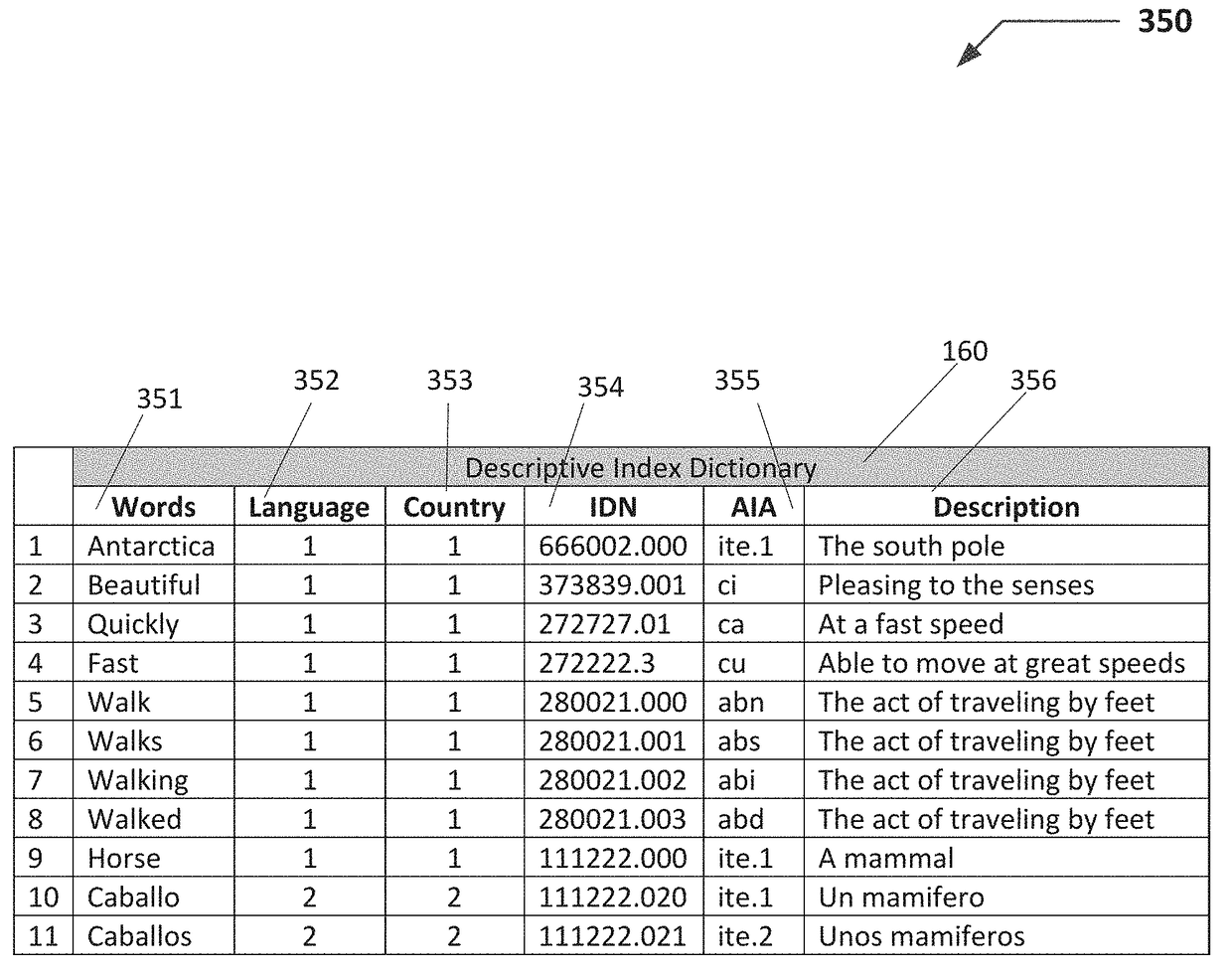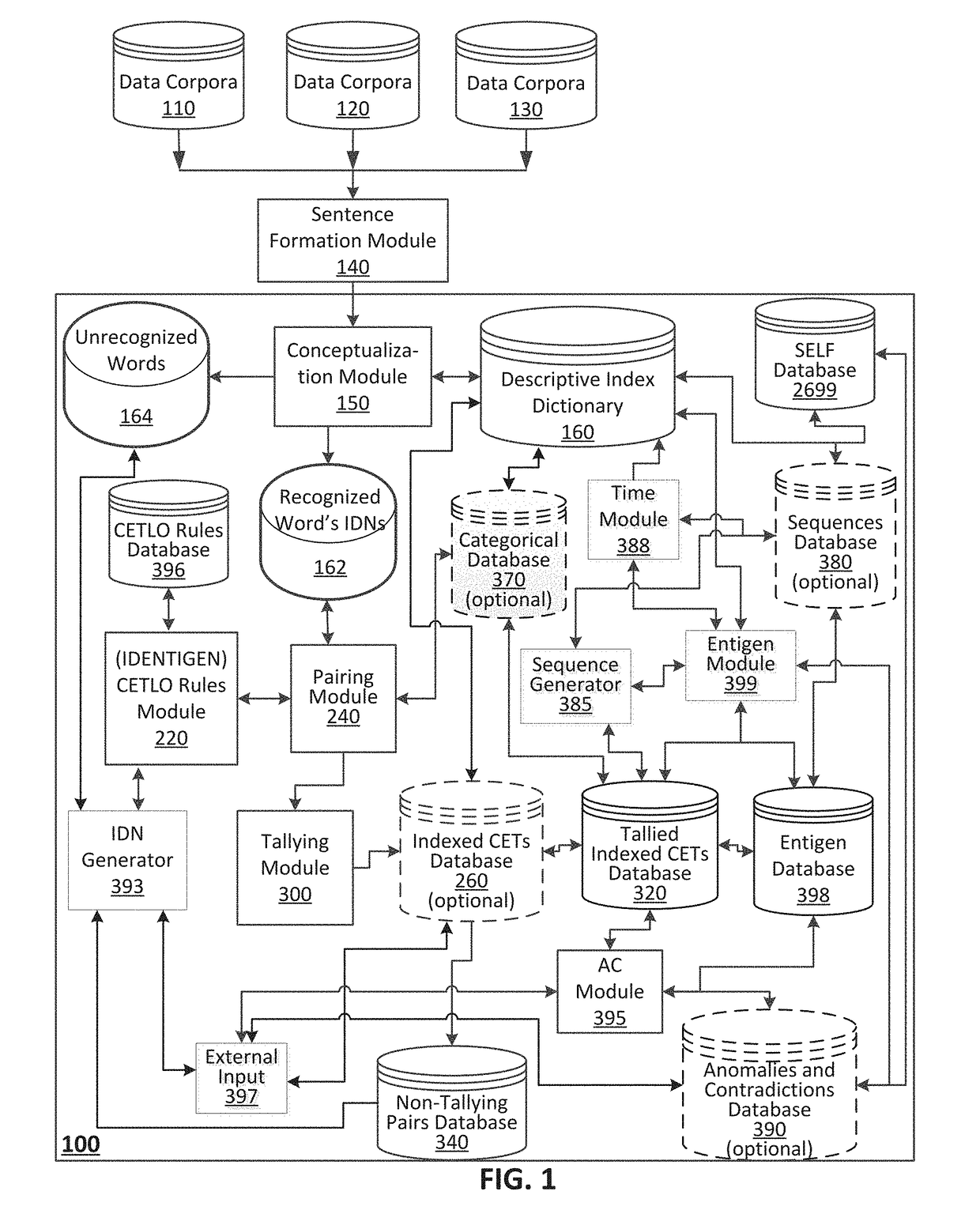Currently, there is often useful information resident in this sea of data that cannot be extracted efficiently for analysis.
There is simply too much data for humans to absorb.
While computers may be fast enough to process the data, they cannot comprehend concepts or context needed to understand the content of the data.
Humans understand concepts and context, but cannot process the data fast enough to get through it all.
The information can be hugely useful if it can be extracted and sorted in such a way as to enable sophisticated analysis—but without an ability to understand the data, itself, identifying what is relevant data for extraction and analysis has not been possible.
The promise of “
Big Data” analytics will never be met if the relevant data cannot be extracted from its massive storage repositories.
Increasing processor speed may reduce the challenge presented by data volume, but no currently available
software will overcome the challenge presented by words, which effectively encrypt the data.
Whether simply searching data files for specific elements of data or extracting specific elements from data for complex analysis,
current technology is limited to search-and-retrieve operations driven by word-based
pattern matching and statistical modeling.
Therefore, even with increased
computer processing power, the problem of understanding data still exists.
Because computers cannot comprehend the words contained in the data files,
current technology can do little more than apply sophisticated algorithms to identify similar word patterns in a user's query with those in the data.
But worse than that, because the computer did not understand the question, none of the results answer the question.
When answering a query requires understanding both the query and the text files, word-based
pattern matching is inadequate.
Not only is this process of generating question and answer pairs exceedingly expensive and
time consuming, it also limits the information that can be extracted from the data to those questions that have been previously created and stored.
While such an approach may be adequate for
static data sources, such as voluminous government regulations, historical fact tables, or
medical diagnostic decision trees, it cannot provide insights into
dynamic data, nor can it leverage the inexhaustible power of a computer's ability to find all relevant, co-related data in huge data files.
Currently, available technology simply cannot provide insightful knowledge.
But it cannot provide insightful knowledge, or extract all the relevant data for additional analysis from data files because it cannot comprehend the meaning(s) in data, such as text.
Humans can read and comprehend text files, but cannot process fast enough to sort through massive files quickly.
Computers can process data quickly, but cannot comprehend the concepts and context conveyed by text.
The technology to achieve the latter has not yet been demonstrated by known approaches.
The promise of “
Big Data” analytics cannot be met if the relevant data cannot be understood and extracted from its massive storage repositories.
This current lack of understanding effectively buries
relevant information in overwhelming volume and masks it with the ambiguities inherent in words.
Increasing processor speed will reduce the challenge presented by data volume, but no currently available
software will overcome the challenge presented by words.
The first point is that grammar does not reflect the mind's natural ability to learn, create and achieve language and speech.
As a result, grammar not only divided “human” in two diverging terms and “talking” into three completely different terms, but in addition, grammar added complexity, because the grammatical classifications of “human” and “talking” were based on usage of each word within each
sentence, not meaning.
Another serious limitation that grammar endows is that most colloquial and conversational communications between people are informal and therefore do not follow the rigidness or sophistication demanded by the rules of grammar.
This limits grammatical-based technologies from
processing this type of data.
Consequentially, grammar, aside from adding complexity and unnecessary partitioning of words, also reduces the capacity of computers and
software to be flexible to process and understand what people are naturally saying, writing or implying.
Moreover, because the purpose of ontological categories is to distinguish the elements it studies, failing to properly differentiate such elements from each other leads to serious inconsistencies.
Indeed, if we select the wrong parameters to distinguish and study the elements of a given
system, the resulting categories could be obtrusive and contradictory.
To date, this approach or methodology precludes
current technology from recognizing the single unique individuals, unique items, or unique things that words represent or are trying to describe in time and space.
Nor can current technology assign or associate actions and / or attributes to a unique single individual, item or thing and vice versa.
As such, Set Theory was never equipped to represent the greater complexities and greater volume of language, the nature of concepts and the intended things which are needed to understand language and replicate logic-based thought.
But more importantly, due to the similarity with mathematical-like sets, the consistency of CETs is governed by profound logical mathematical principals, which give the proposed approach unparalleled logical accuracy not found in current technology.
 Login to View More
Login to View More  Login to View More
Login to View More 


